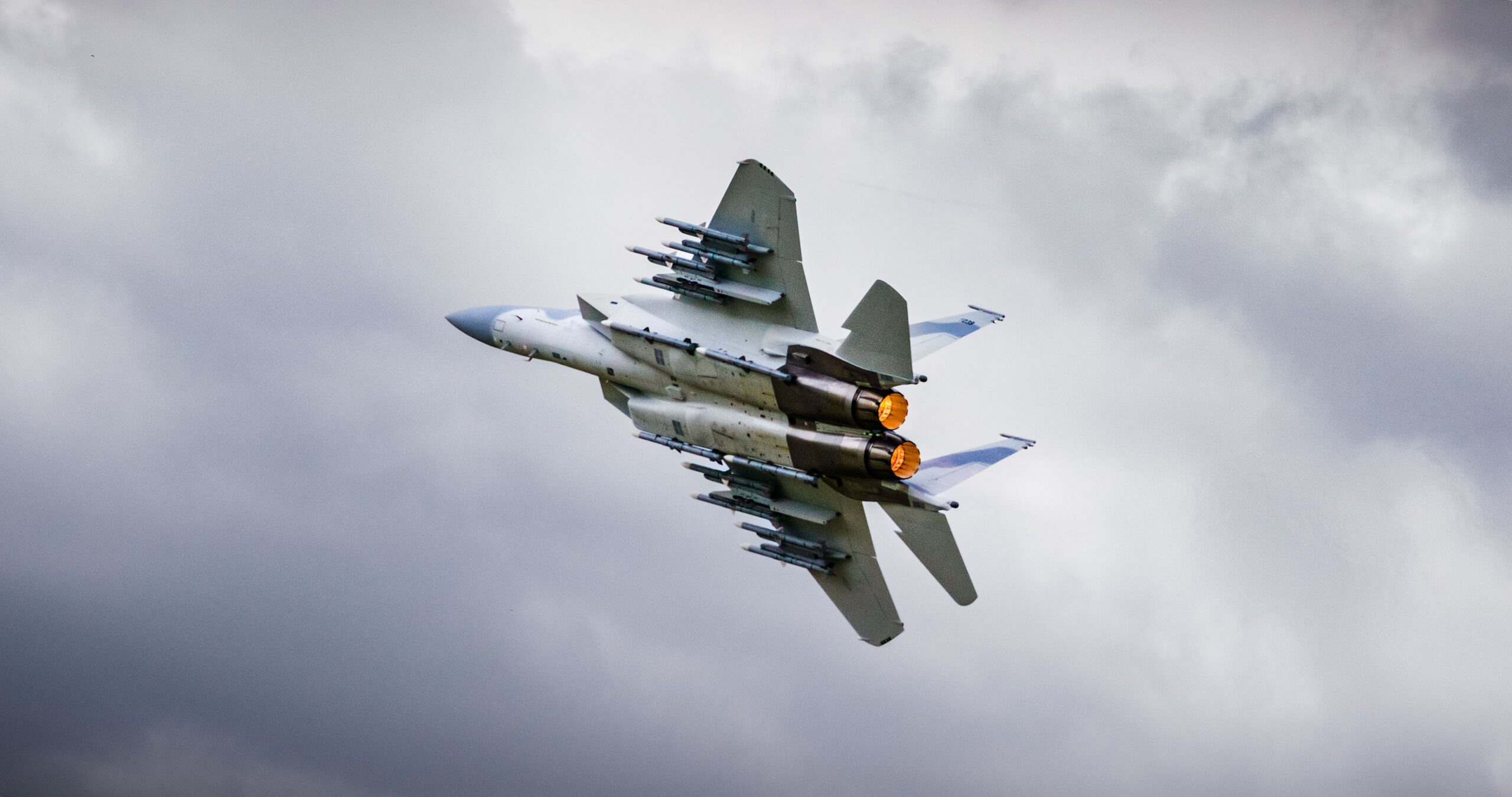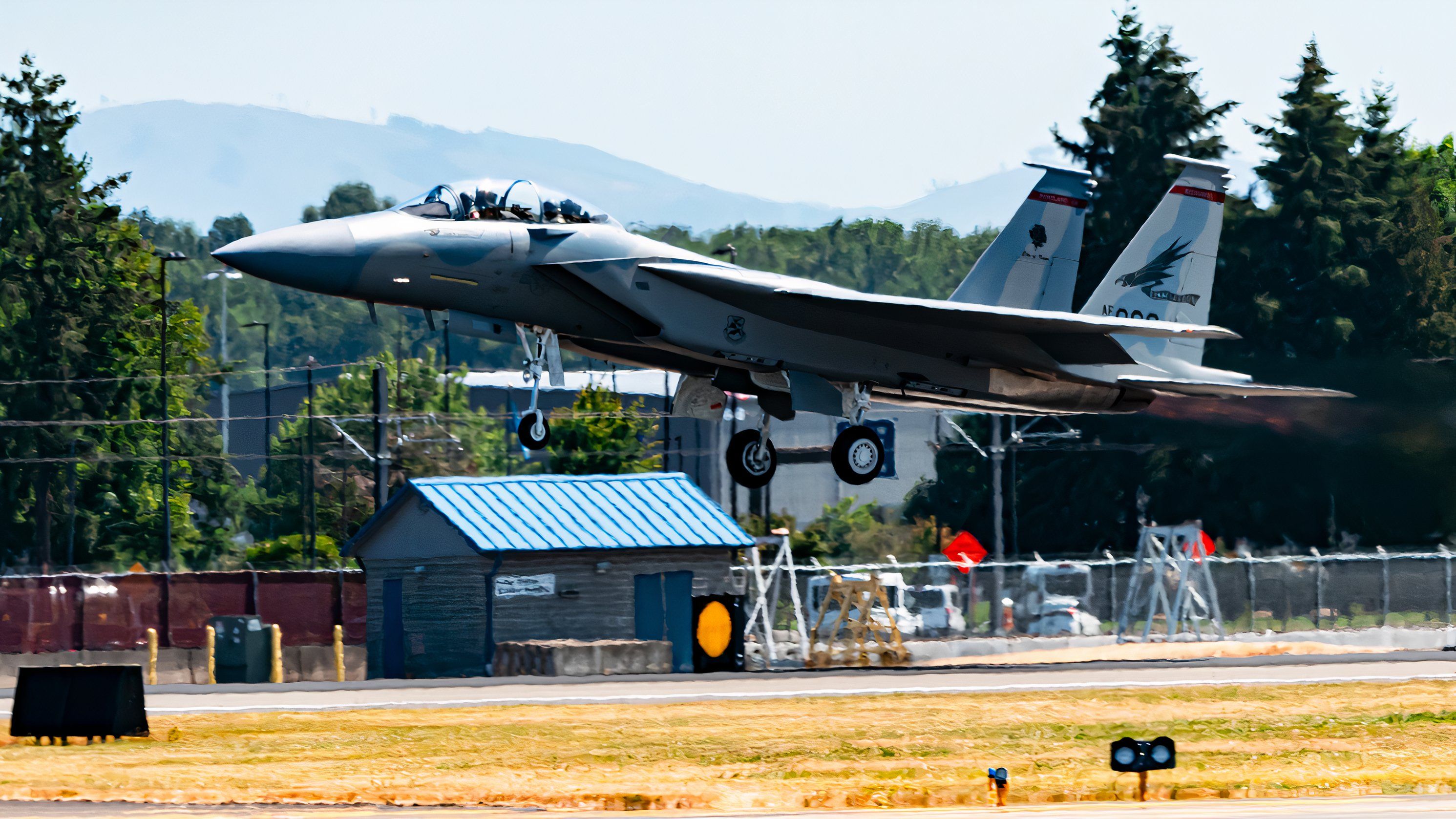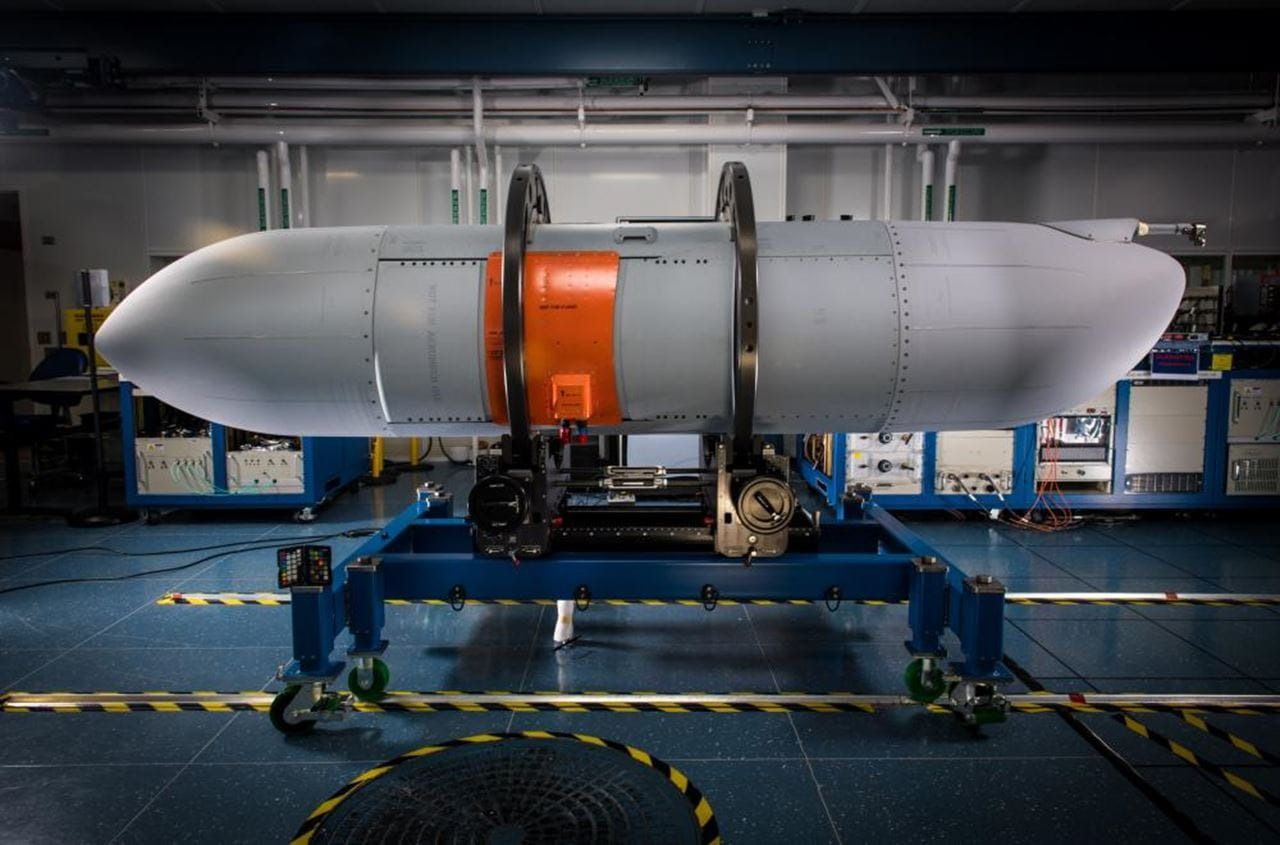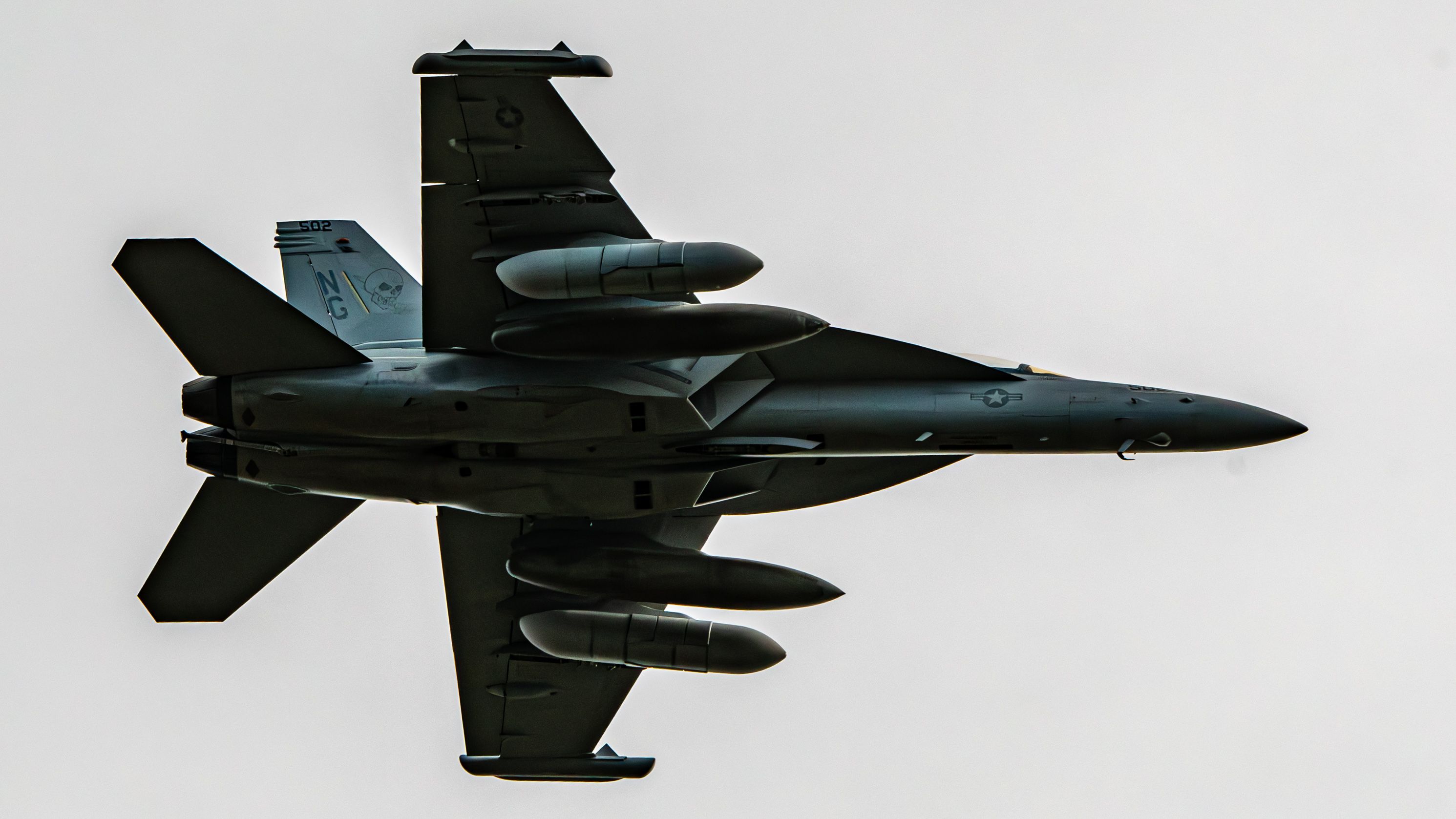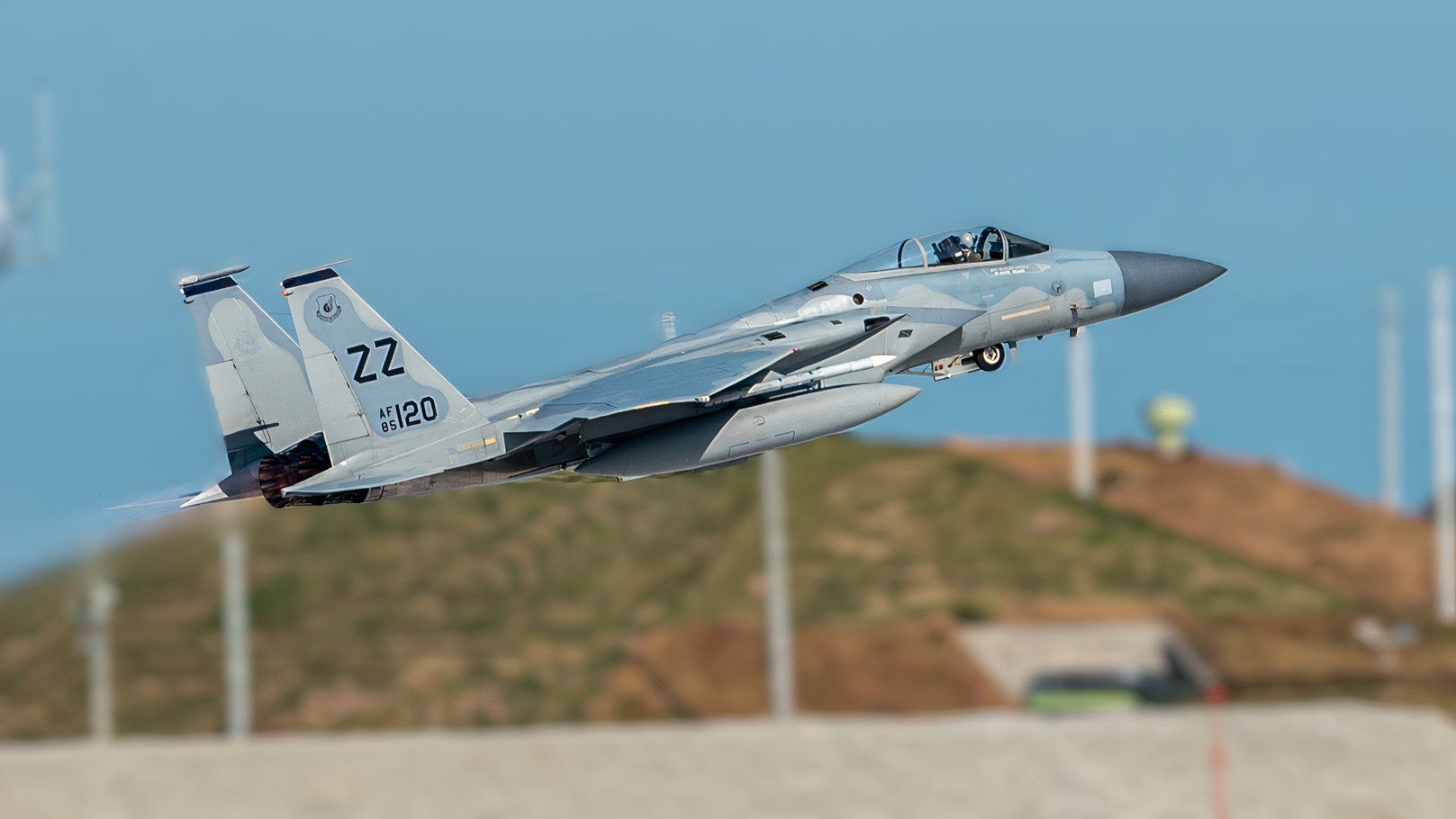Summary
- F-15EX could replace the EA-18G Growler as an electronic warfare platform due to Super Hornet production ending.
- The F-15EX comes with open systems architecture and EPAWSS to jam radars, increasing its effectiveness.
- The F-15EX’s ability to carry NGJ pods and AGM-88 missiles makes it a strong option for airborne electronic attack roles.
The Boeing F-15EX Eagle II is being considered an electronic warfare platform as Boeing’s Super Hornet, which the EA-18G Growler is based on and is currently not being built, will no longer be built after 2027. Already, the F-15EX can carry anti-radiation missiles and has the capability to carry outsize weapons and pods, coupled with an open systems architecture. Without an airborne electronic attack platform, allied forces may be unprotected from many radars and threats ranging from improvised explosive devices to drones.
“The Growler line has ended…”
According to a July 23 Breaking Defense report, Rob Novotny, Boeing’s business development lead for the F-15 with his biography at the bottom of this article, led discussions about the future marketability of the F-15EX. Novotny did share with Breaking Defense that,
“The Growler line has ended. … [Therefore] there’s a lot of conversation internally, could we turn this [the F-15EX] into a Growler.”
Additionally, Novotny shared with Breaking Defense,
“My big takeaway is, there’s a lot of excitement in the global defense market for fighter jets. And I mean, unfortunately, world events have created a kind of refocus on air superiority and air dominance platforms.”
With that, let’s take a look at why work to give the F-15EX electronic warfare capability.
A logical translation
Boeing leaders are thinking that with the Super Hornet production line closing in 2027 and the EA-18G Growler based on the Super Hornet, the F-15EX Eagle II would be a good future airborne electronic attack platform. The F-15EX will be built for years to come.
Photo: Joe Kunzler | Simple Flying
Why? Orders are likely from Poland and Israel, as well as increased US Air Force orders beyond 92 aircraft for starters. There is also the possibility that Indo-Pacific F-15 users like Japan, South Korea, and Singapore would be interested in an F-15EX variant that could suppress surface-to-air defenses and the enemy’s use of the electromagnetic spectrum.
How to make the F-15EX an airborne electronic attack platform
According to Aviation Week’s Steve Trimble on July 23, Novotny shared the sentiment that,
“Modern aerial combat requires command of the electromagnetic spectrum, and this platform would lead the way into the next decade or two.”
But how? First, the F-15EX Eagle II comes with open systems architecture. Open systems architecture comes with a data exchange standard. As such, open mission systems allow weapons, sensors, and pods for starters to use common data formats. Additionally, the user interface and hands on throttle and stick (HOTAS) the pilot and weapons systems officer (WSO) use remain relatively the same for using air-to-air missiles and a potential anti-radiation missile. As one can see below, the F-15EX comes with a large reprogrammable touchscreen display with the traditional HOTAS.
Then the F-15EX comes with its own internal electronic warfare suite called the Eagle Passive/Active Warning Survivability System, or EPAWSS. EPAWSS, also going into other US F-15 Eagle family aircraft, can geo-locate and selectively jam radars posing a threat to the Eagle. As per the YouTube below and other sources, EPAWSS can pack more chaff and flares to confuse inbound missiles to the point of 360 cartridges – double previous Eagle’s ability.
But EPAWSS cannot jam search radars very well and certainly not the kinds of devices on the electromagnetic spectrum that trigger drones and improvised explosive devices (IEDs). Hence, Boeing is discussing turning the F-15EX into an airborne electronic attack platform.
Enter the Next Generation Jammer
A review of RTX’s Raytheon webpage about the Next Generation Jammer Mid-Band reassures that the pods do have open systems architecture to help with upgrades. So combining the Raytheon pods with the Boeing F-15EX should be easy from a software perspective.
Photo: Raytheon
One can also learn more about the Next Generation Jammer pods from when Simple Flying broke the news that the pods were mounted on EA-18G Growlers conducting field carrier landing practice at NAS Whidbey Island’s OLF Coupeville in October 2023:
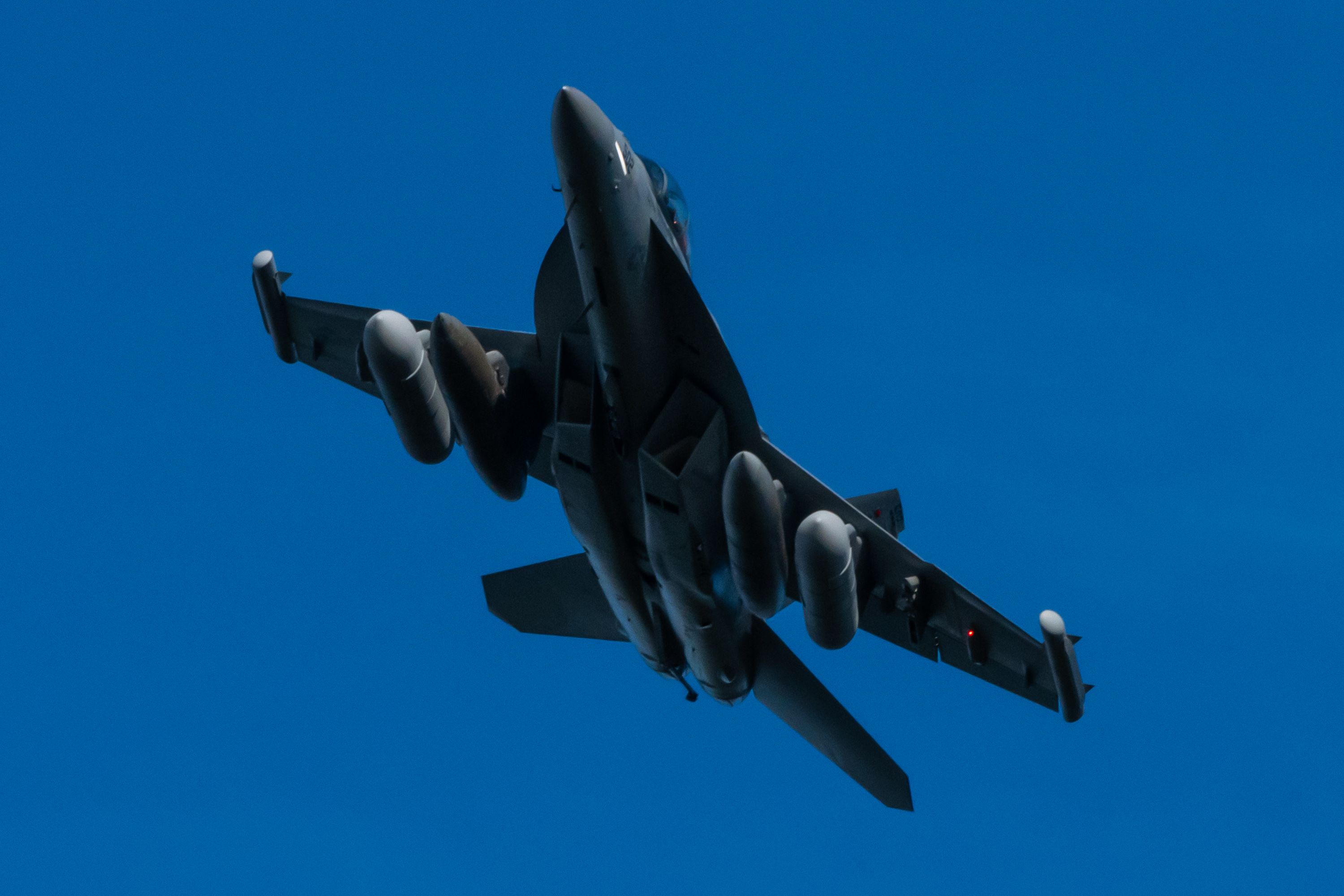
Related
What You Need To Know About The EA-18G Growler’s Next Generation Jammer Pods
A basic explainer about the Boeing EA-18G Growler and its new Next Generation Jammer pods.
Additionally, during the Oregon Air National Guard F-15EX unveiling Simple Flying attended earlier this month, not only was open systems architecture discussed, but also the carriage capabilities of the F-15EX to carry any weapon in the US Air Force inventory versus for instance, the F-35. As Greg “Sherlock” Watson, an F-15EX Eagle II program manager for the US Air Force, shared with Simple Flying – the F-15EX is considered the “apex predator of fighter airplanes” as the F-15EX “flies higher, farther, faster, can carry more weapons, can carry bigger weapons than anything else in the Air Force arsenal.”
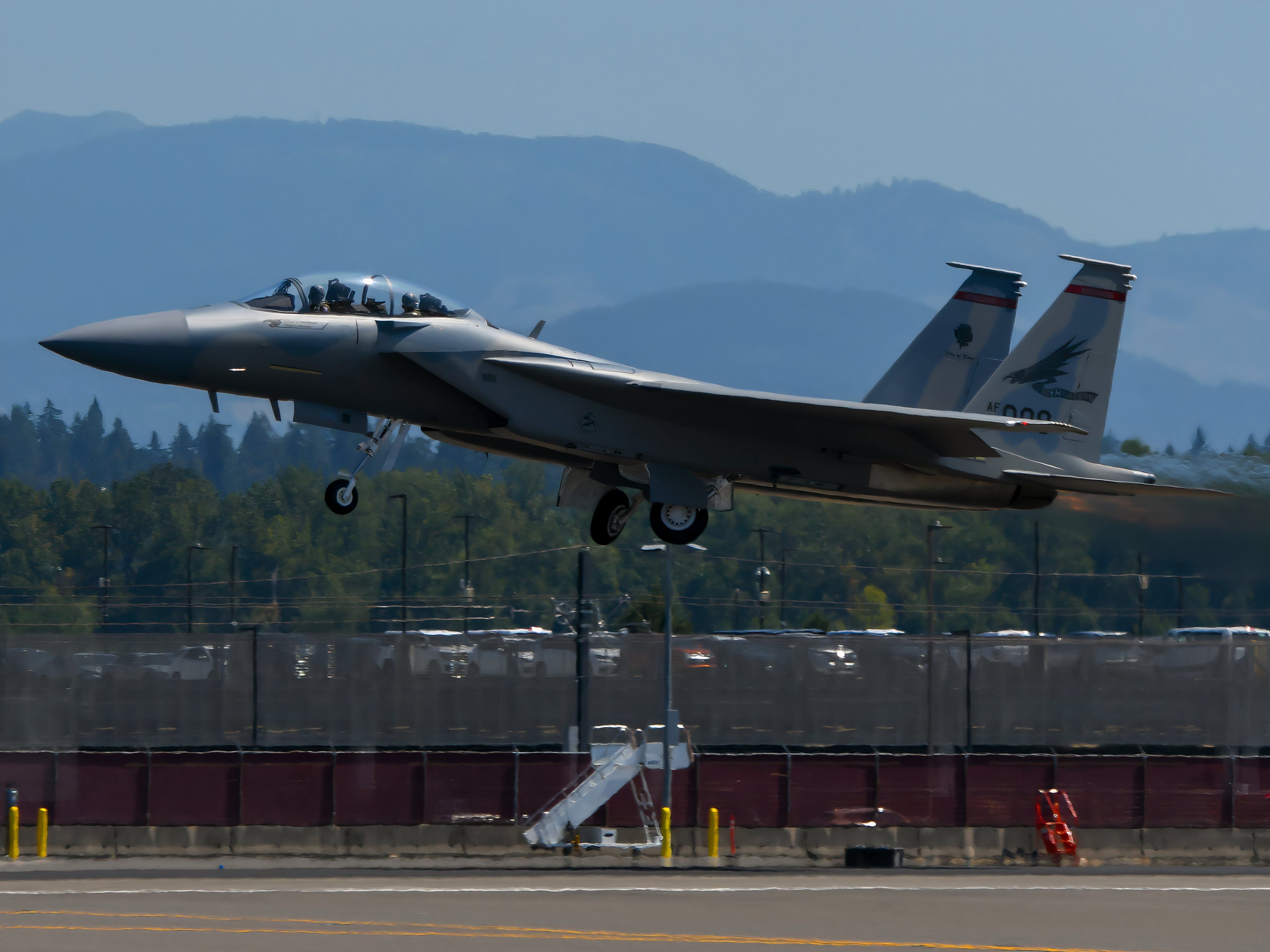
Related
142nd Wing Receives New Flagship F-15EX Eagle II In Portland
A look at the soul of the US Air Force’s new fighter jet.
The F-15EX can theoretically carry the Next Generation Jammer pods and has been proven to be able to carry the same AGM-88 family of anti-radiation missiles the EA-18G Growler does. One should note that the AGM-88 in the words of former USAF fighter pilot Jon Norman shared with Simple Flying earlier this month,
“When you fire the HARM, it flies out on a flight profile, it opens its eyes, and then it’s looking for that specific threat that you handed off to it, and then it’s going to guide it on that radar, and then explode and take that radar out. So, it’s a very responsive weapon. I’ve flown in and tested that when I was doing operational tests, and then I employed a lot of ’em in Operation Iraqi Freedom, and it works every time. It’s an awesome weapon.”
Combining an aircraft that can jam enemy radars and employing the AGM-88 family against an enemy radar makes the aircraft very effective against surface-to-air defenses. Although the F-15EX will never be employed on the US Navy’s aircraft carriers—thereby somewhat limiting its ability to forward deploy to a crisis situation—the F-15EX could provide additional long-range airborne electronic attack platforms if need be.
Additional backseat capabilities
To help enhance those capabilities, the F-15EX, according to Novotny in a July 23 Defence One report, can handle an ABMS/JADC2 node. What’s an ABMS/JADC2 node? According to the US Air Force research lab, such a node allows for very secure connections between sensors and weapons platforms, allowing for long-range remote control. Such a node would allow the F-15EX to do something the crewed Next Generation Air Dominance (NGAD) platform is intended to do with the Collaborative Combat Aircraft (CCA) component: Control a drone. Novotny was quoted in the Defense One report as sharing that potential F-15EX customers,
“In all the conversations with the customers, the one thing I get the most is the excitement that there’s a second seat to do something.”
When Simple Flying was able to speak with the 142nd Wing earlier this month, it was made clear the F-15EX’s rear cockpit with the large area display leads to an exploration into putting an air battle manager, cyber, or space expert in that rear seat as missions require has been initiated. Perhaps an electronic warfare officer or EWO will also be considered.
A few EA-18G Growler facts
There is already a Boeing product that carries an EWO in the back—namely, the Boeing EA-18G Growler. A Boeing spokesperson confirmed for Simple Flying that Boeing manufactured 160 EA-18G Growlers for the US Navy and 12 Growlers for the Royal Australian Air Force.
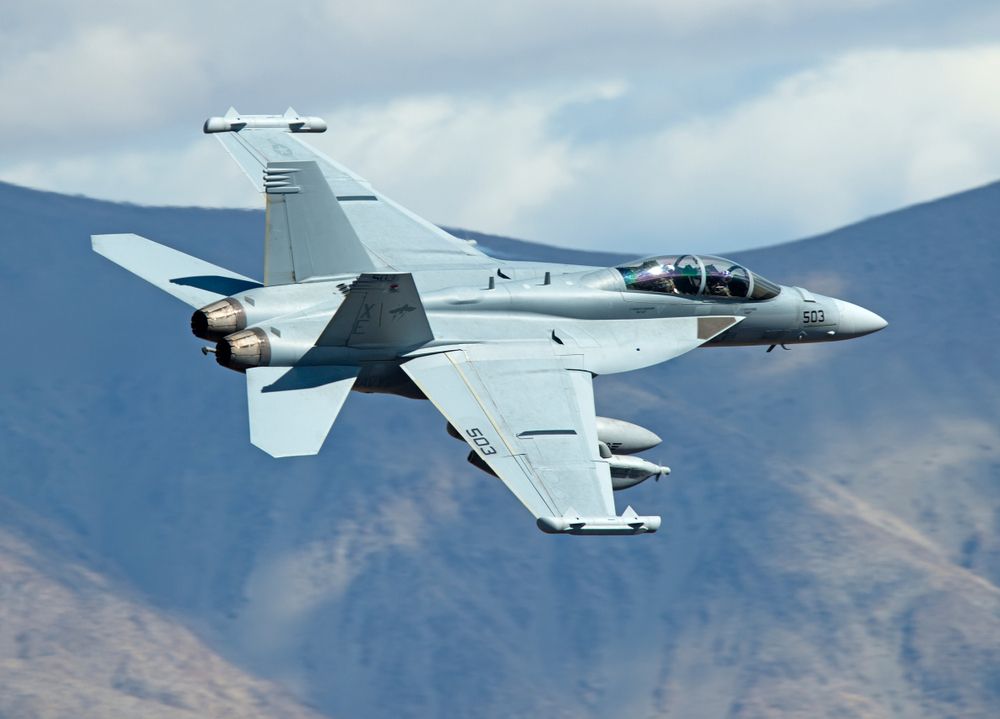
Related
The Boeing EA-18G Growler: 5 Things You Need To Know
A quick dive into the fighter and its 15-year history.
Additionally, some of the 160 EA-18G Growlers serve in “expeditionary” squadrons that are land-based to support land forces since the US Air Force gave the airborne electronic attack mission to the US Navy upon divesting the General Dynamics-Grumman EF-111 Raven profiled below as item 4:
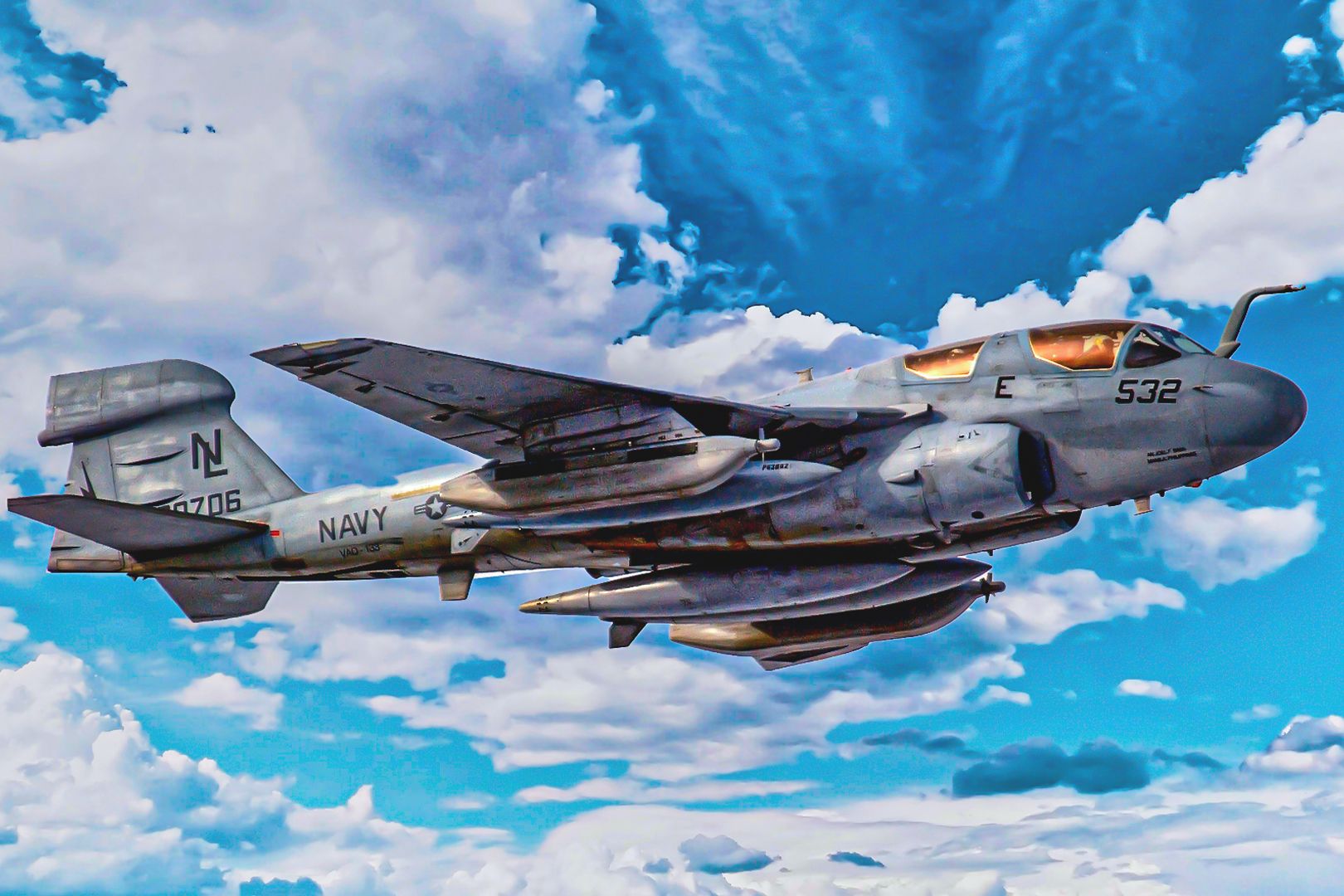
Related
Top 5 Electronic Warfare Aircraft Of The Cold War
Two of these continue to serve in the military for nearly five decades.
There is currently no intent to build new EA-18G Growlers, but plans are underway to upgrade most if not all of the Growlers to a Block II configuration. The Block II Growler will come with computer and cockpit display enhancements. One can see the Next Generation Jammers mounted below that are part of the Block II efforts:
Photo: Joe Kunzler | Simple Flying
According to HigherGov.com, a February 16 presolicitation for a contract notes;
“The Growler Block II Phase I upgrade of the Electronic Attack Unit (EAU), known as Next Generation Electronic Attack Unit (NGEAU), provides a capability that greatly enhances the EA-18G’s ability to autonomously process and respond to unknown signals in an extremely dense EMS [Electromagnetic Spectrum] environment.”
For sure, there will be more upgrades to the EA-18G Growler. One can read more about the Growler’s general capabilities below:

Related
5 Electronic Warfare Capabilities Of The US Navy’s EA-18G Growler
This F/A-18F Super Hornet variant is an electronic force to be reckoned with.
Those same capabilities would seem to easily transfer to the Boeing F-15EX with a bit of additional investment. However, the EA-18G Growler is capable of being operated off of aircraft carriers while the F-15EX is not. Which means the F-15EX must have access to a land base somewhat close to an adversary nation or group to be effective while the Growler can take-off from sea. While the F/A-XX program will likely have a variant that replaces the Growler in the 2040s or so – if the F/A-XX program comes to life, that is – the growing need for airborne electronic attack arguably cannot wait for a new navalized fighter.
Bottom line
Ultimately, a slightly abridged quote from Fighting in the Electromagnetic Spectrum: U.S. Navy and Marine Corps Electronic Warfare Aircraft, Operations, and Equipment by Thomas Wildenberg seems appropriate;
“When budgets become tight…. leadership within the aviation community prefers to spend their limited resources on obtaining more fighter, bomber, or attack aircraft. When the next major conflict arises, however, the military frequently finds that it lacks EW [Electronic Warfare] assets to support all of the mission objectives and is forced to rely on a limited number of somewhat obsolete (in terms of EW capabilities) aircraft.”
Hence, there is enthusiasm for adding EW-capable aircraft back to the US Air Force inventory. For without mastery of the electronic spectrum, there is no stealth. As Rob Novotny, a former fighter pilot and operational tester explained the importance of stealth to Breaking Defense,
“Stealth means, to me, I can go to a place where the enemy doesn’t want me to go, and I can operate in their environment, achieve my objective, and not be targeted.”
Without jamming the radars that seek to deny stealth, there is no stealth. Just ask the F-117 Nighthawk pilot – not Rob Novotny but Dale Zeiko – who was shot down over Serbia in 1999 due to lack of airborne electronic attack support.
About Rob Novotny
Since Rob Novotny was quoted extensively above, here is a Simple Flying profile of Mr. Novotny. Rob Novotny brings to Boeing much F-15 and leadership experience – and not just starting his US Air Force career as a F-15C pilot. Among other prior accomplishments for Novotny include a squadron commanding officer of Kadena Air Base’s 67th Fighter Squadron, which flew F-15Cs as you can see below:
Novotny was also the former commander of the 53rd Test & Evaluation Group conducting operational testing, and the RAF Lakenheath’s 48th Fighter Wing, which was F-15C Eagles and F-15E Strike Eagles in his day. Novotny tapped out his career as a Brigadier General who was Nellis Air Force Base’s 57th Wing Commander, which includes responsibility for the US Air Force Weapons School, two US Air Force aggressor squadrons, the units that conduct Red Flag plus Green Flag training exercises where EA-18G Growlers have participated in most, and the US Air Force Thunderbirds airshow demonstration team. In short, Novotny knows the F-15 family very well as a pilot and leader of units with different F-15 family members.
What are your thoughts? Please share in the thread.

